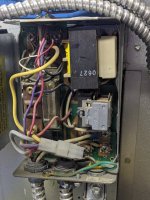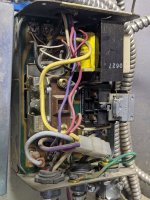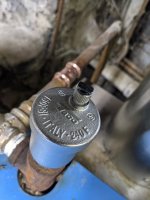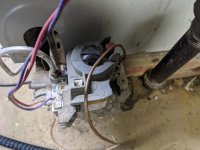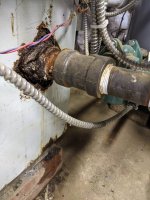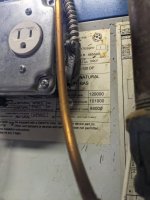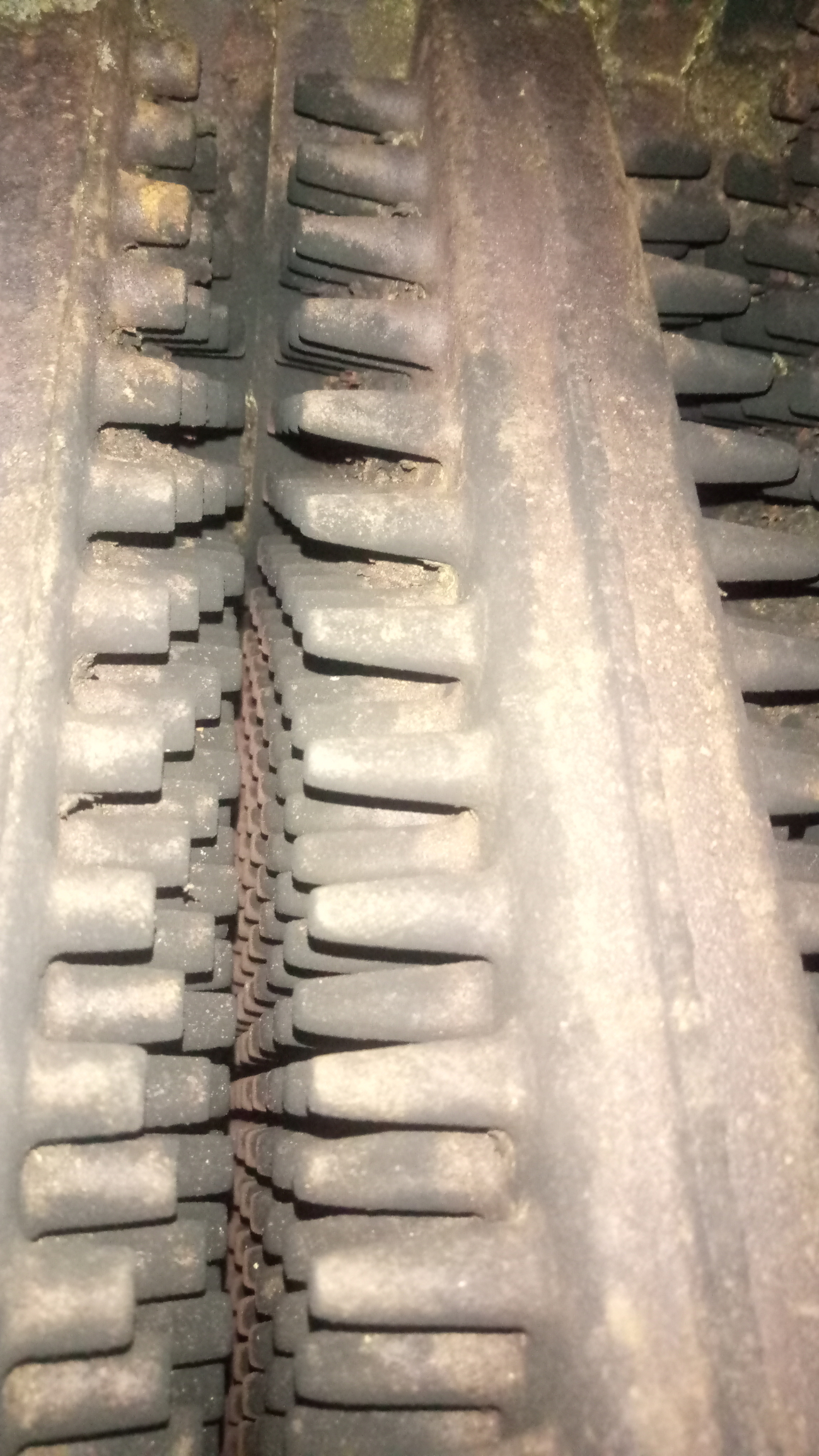Hi All!
I've gotten a crash course over the last 2 months of owning an old Victorian style home in Rhode Island, seems like everything is going wrong with this heating system.
So a quick description of the heating system: there are a total of 6 zones coming off of a Slant Fin S-120 DP. 4 Zones hit different sections of the main house (2200 SF), 1 controls the guest cottage, and one controls the indirect hot water tank.
So two weeks after we moved in the coil of the indirect tank went, and I just replaced that. There have been a few other minor issues like the HyVent? and a new control valve but otherwise it's just been acting funky and getting worse, and it just has to do with the honeywell controls I think. What happens at this point is as long as the heating system is firing and staying hot there is no problem, but now that it's getting warmer the boiler is staying cool for long periods of time, and when it cools off at night and the thermostats call for heat, it never kicks back on. The valves will be open but the boiler just sits cold. If I shut off the boiler for a few seconds and restart it it kicks right on and heats up just fine, though it seems to be getting worse? It's like it won't maintain itself at a hot temperature either once it reaches the 180 i've set it to. Any advice would be sorely appreciated, it's been a rough couple of months trying to figure out what I need to do with this system.. and we were trying to replace the roof this year, so that was going to be our big expense. ugh.
Of course there's another thing that's stressing me out is the return plumbing into the boiler is shot, and I think is part of the reason why the hot water tank coil rusted out in just over 10 years. The connection is TERRIBLE, and I would love to know if there's any way I can replace the connection or if I'm going to replace the entire boiler when it goes? I've literally seen steam escape from the rusted out section as the boiler is reheating over the past few days..
So this is a layman's account of an incredibly hard system for me (moving from a small house with steam) and I'm just trying to get my "sea legs" under me for what i'm in for trying to get this system up and running well.
Thanks for all info, let me know if I can provide any more information and I'll follow through with that.
Pip.
I've gotten a crash course over the last 2 months of owning an old Victorian style home in Rhode Island, seems like everything is going wrong with this heating system.
So a quick description of the heating system: there are a total of 6 zones coming off of a Slant Fin S-120 DP. 4 Zones hit different sections of the main house (2200 SF), 1 controls the guest cottage, and one controls the indirect hot water tank.
So two weeks after we moved in the coil of the indirect tank went, and I just replaced that. There have been a few other minor issues like the HyVent? and a new control valve but otherwise it's just been acting funky and getting worse, and it just has to do with the honeywell controls I think. What happens at this point is as long as the heating system is firing and staying hot there is no problem, but now that it's getting warmer the boiler is staying cool for long periods of time, and when it cools off at night and the thermostats call for heat, it never kicks back on. The valves will be open but the boiler just sits cold. If I shut off the boiler for a few seconds and restart it it kicks right on and heats up just fine, though it seems to be getting worse? It's like it won't maintain itself at a hot temperature either once it reaches the 180 i've set it to. Any advice would be sorely appreciated, it's been a rough couple of months trying to figure out what I need to do with this system.. and we were trying to replace the roof this year, so that was going to be our big expense. ugh.
Of course there's another thing that's stressing me out is the return plumbing into the boiler is shot, and I think is part of the reason why the hot water tank coil rusted out in just over 10 years. The connection is TERRIBLE, and I would love to know if there's any way I can replace the connection or if I'm going to replace the entire boiler when it goes? I've literally seen steam escape from the rusted out section as the boiler is reheating over the past few days..
So this is a layman's account of an incredibly hard system for me (moving from a small house with steam) and I'm just trying to get my "sea legs" under me for what i'm in for trying to get this system up and running well.
Thanks for all info, let me know if I can provide any more information and I'll follow through with that.
Pip.
Attachments
-
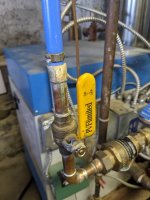 PXL_20210329_144351579.jpg78.3 KB · Views: 186
PXL_20210329_144351579.jpg78.3 KB · Views: 186 -
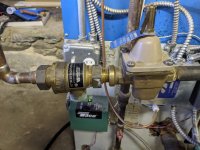 PXL_20210329_144357113.jpg95.9 KB · Views: 195
PXL_20210329_144357113.jpg95.9 KB · Views: 195 -
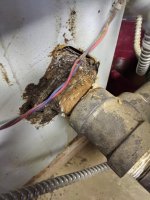 PXL_20210329_144401728.jpg90.7 KB · Views: 193
PXL_20210329_144401728.jpg90.7 KB · Views: 193 -
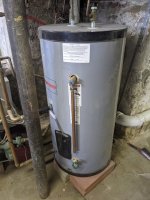 PXL_20210331_161420787.jpg97.4 KB · Views: 184
PXL_20210331_161420787.jpg97.4 KB · Views: 184 -
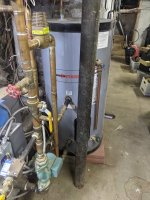 PXL_20210331_161430082.jpg114.3 KB · Views: 198
PXL_20210331_161430082.jpg114.3 KB · Views: 198 -
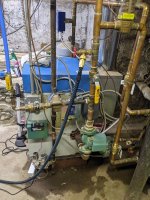 PXL_20210429_010658069.jpg142.3 KB · Views: 187
PXL_20210429_010658069.jpg142.3 KB · Views: 187 -
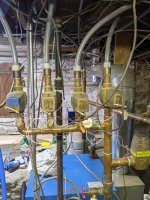 PXL_20210429_010702927.jpg137 KB · Views: 184
PXL_20210429_010702927.jpg137 KB · Views: 184 -
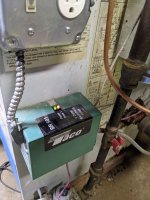 PXL_20210501_012053520.jpg97.4 KB · Views: 180
PXL_20210501_012053520.jpg97.4 KB · Views: 180 -
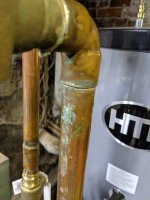 PXL_20210501_012212985.jpg63.7 KB · Views: 179
PXL_20210501_012212985.jpg63.7 KB · Views: 179 -
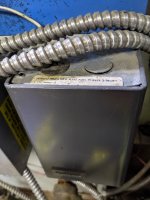 PXL_20210501_013949338.jpg79.4 KB · Views: 191
PXL_20210501_013949338.jpg79.4 KB · Views: 191

